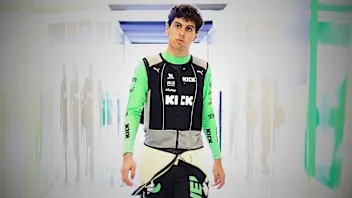MONDAY MORNING DEBRIEF: What on earth happened to the pace of Ferrari and Mercedes in Brazil?


Max Verstappen won his 52nd career Grand Prix at Interlagos on Sunday, putting him one ahead of Alain Prost and just two behind Sebastian Vettel. He had every reason to be happy.
As did Lando Norris after finishing a strong second for McLaren, even briefly going wheel-to-wheel with Verstappen, this after having set pole in the Saturday Shootout. Aston Martin’s Fernando Alonso delivered one of the best drives of his long career in fending off Sergio Perez’s Red Bull for third in a thrilling dice, which had the crowd on its feet.
For Ferrari and Mercedes there was no such satisfaction, each suffering the weakest weekend of their respective seasons. Both were uncompetitive and both had only one car still running at the finish, with Carlos Sainz’s Ferrari sixth, 50s adrift of Verstappen and Lewis Hamilton’s Mercedes eighth, a further 12s behind.
Charles Leclerc’s retirement before the race had even started was due to a mechanical component failure, which robbed the hydraulic pump of pressure, momentarily cutting out the engine and losing the power steering, a combination which put the Ferrari into the Turn 7 barriers on the lap to the grid.
Next Up
Related Articles
/TEAM%20PREVIEWSHALF%20TERM%20REPORTS%20DISPLAY%20V1%20(13).webp) End Of Year Reports 2025Racing Bulls’ best and worst moments from 2025
End Of Year Reports 2025Racing Bulls’ best and worst moments from 2025.webp) End Of Year Reports 2025Alpine’s best and worst moments from 2025
End Of Year Reports 2025Alpine’s best and worst moments from 2025 ExclusiveBortoleto on his rookie year and Audi excitement
ExclusiveBortoleto on his rookie year and Audi excitement ExclusiveWhy Gasly feels ‘ready for my time’ in F1
ExclusiveWhy Gasly feels ‘ready for my time’ in F1 Mekies on ‘very difficult’ decision to demote Tsunoda
Mekies on ‘very difficult’ decision to demote Tsunoda Albon names moment he's most proud of from 2025
Albon names moment he's most proud of from 2025
